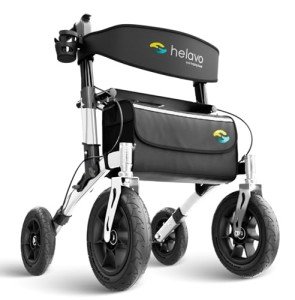10 Healthy Walking Aid Habits

Understanding Walking Aids: Enhancing Mobility and Independence
Walking help play an essential function in boosting mobility and independence for people with differing degrees of physical restrictions. They can substantially enhance the quality of life by offering support, stability, and self-confidence when walking around. This article checks out the various kinds of walking aids, their benefits, elements to think about when choosing one, and responses to frequently asked questions to help direct those seeking assistance.
Kinds Of Walking Aids
Walking aids come in different kinds, each created to accommodate particular requirements. Let's take a better look at some typically used walking help:
| Type of Walking Aid | Description | Ideal For |
|---|---|---|
| Walking canes | A single stick that supplies support and balance, typically made from wood or aluminum. | Individuals with mild instability or requiring minimal support. |
| Walkers | Frames with four legs that offer stability and support for individuals who require more assistance than a walking stick can offer. | People with moderate mobility issues or recovering from surgical treatment. |
| Rollators | Comparable to walkers but geared up with wheels, handbrakes, and a seat for resting. | Individuals who require mobility support however can walk short distances. |
| Crutches | 2 long poles that offer support by positioning weight on the arms. They typically require strength and coordination. | Individuals recovering from leg or foot injuries. |
| Mobility Scooters | Electrically powered scooters designed for people with considerable mobility problems. | Individuals who can not stroll long distances or have serious physical restrictions. |
Advantages of Using Walking Aids
Integrating a walking aid can cause various benefits, consisting of:
- Increased Stability: Walking aids help reduce the threat of falls by supplying additional support and balance.
- Enhanced Independence: Individuals can bring out everyday activities with higher ease and self-confidence, lowering the requirement for assistance from others.
- Pain Relief: Some walking aids assist reduce discomfort in the joints, such as hips or knees, by rearranging weight.
- Enhanced Posture: Many walking help encourage better posture, which can lead to reduced stress on muscles and joints.
- Exercise: An ideal walking aid encourages individuals to stay active, promoting cardiovascular health and general wellness.
Aspects to Consider When Choosing a Walking Aid
Choosing the ideal walking aid is crucial for optimizing its advantages. Here are several aspects to think about:
- Level of Mobility: Assess the individual's capability to walk individually and determine the extent of support needed.
- Physical Strength: Consider upper body strength, as some aids need more muscular control (e.g., crutches).
- Environment: Evaluate both indoor and outdoor environments to determine the best kind of walking aid based upon surface areas and challenges.
- Height and Size: Ensure that the walking aid fits the user properly. Many help have adjustable height settings.
- Weight Capacity: Be mindful of the weight limitations of various help to avoid potential mishaps or breakdowns.
Popular Walking Aids: A Quick Comparison
For a more simplified view of popular walking aids, here's a table comparing their viability for various needs:
| Walking Aid Type | Support Level Needed | Perfect User Type | Weight Capacity | Portability |
|---|---|---|---|---|
| Walking sticks | Low | Seniors, mild injuries | Approximately 300 pounds | High |
| Walkers | Moderate | Post-operative, neuromuscular conditions | As much as 400 lbs | Medium |
| Rollators | Moderate to High | Elderly, active individuals requiring rest | Up to 300 pounds | Medium |
| Crutches | Moderate to High | Injuries or surgeries | Varies commonly | Medium |
| Mobility Scooters | High | Limitations in leg strength | As much as 500 pounds | Low |
Frequently Asked Questions (FAQs)
1. How do I know if I need a walking aid?It is recommended to
talk to a health care expert or physical therapist if you experience trouble walking, balance problems, frequent falls, or joint pain. They can suggest the very best kind of aid for your scenario. 2. How should I utilize a walking cane properly?Position the cane on the side opposite to the injury or weak point. Hold it with the hand on that side while the cane supports movement on the hurt side. Normally, the cane needs to move on with the injured leg. 3. Can I utilize several walking aids?Yes, individuals might transition between differenthelp based upon their mobility needs at any
time. For example, a person may utilize a walker at home however shift to a cane when walking short distances outdoors. 4. How do I keep my walking aid?Regularly look for wear and tear, specifically on rubber ideas for canes/walkers, and guarantee wheels on rollators and scooters are functioning appropriately. Cleaning up can help lengthen the life of the aid. 5. Will insurance coverage cover the expense of a walking aid?In many cases, health insurance or Medicare may cover part or all of the expense of a medically essential walking aid.
It is essential to examine with your insurance coverage company for specific guidelines. Walking help are vital tools that allow people to gain back self-reliance and improve their mobility. The proper selection based upon personal needs and choices can lead to substantial enhancements in quality
of life. With conversational tone of options available, individuals and caretakers must examine their distinct situations carefully to select the most ideal walking aid. Whether it's an easy cane for support or a mobility scooter for those with severe limitations, the ideal walking aid can make all the difference in attaining better mobility, security, and eventually, a more active lifestyle.

